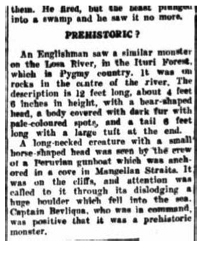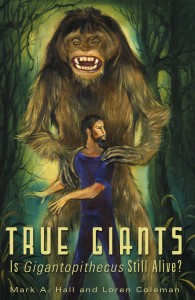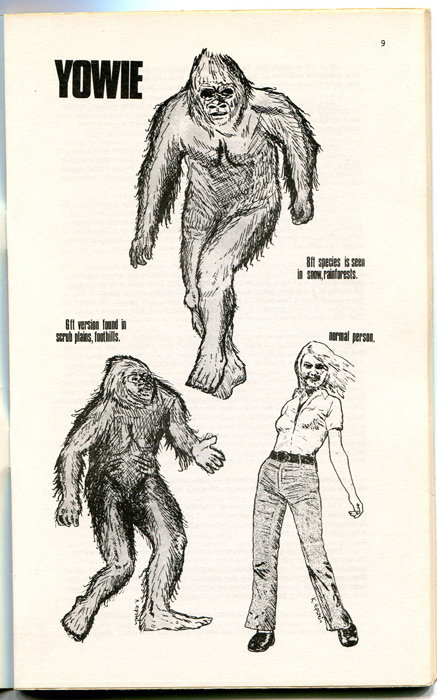
January 30, 2011

Paul Cropper has brought to my attention an article from the Morning Bulletin (Rockhampton, Queensland, Australia: 1878-1954), Monday 18 October 1937, page 5. See the item below.
The common theme running through some of these accounts is intriguing. This collective item contains a variety of large hairy creature reports. The old incidents appear to depict hominoids with large footprints, some 21 inches long, and estimated heights of the beings far above what any Bigfoot or Yeti would be. Cropper, via email, pointed out to me that this gathering of reports may relate to the notion of True Giants, as assembled in the recent book by Mark A. Hall and myself, and published at the end of 2010 by Anomalist Books.
Two of the cryptids related to True Giants include a Brazilian monster’s huge footprints, 21 inches in length, and a Bengali colossus’ seen and leaving 70 footprints, 6 inches deep, measuring 22 inches by 11 inches. The giant Mayan ape and the 1927 account of the giant Bali ape are less clear as to their affinities.
The basis of this article seems to be one T. C. Bridges. Bridges was a writer who penned what we would call cryptofiction today, as well as some factual accounts of high adventure.
For example, in 1927, the English writer T. C. (Thomas Charles) Bridges claimed to have captured a sawfish on a fishing expedition off the coast of Panama and that the fish was 9.4 m (31 ft) in length, 6.4 m (21 ft) in girth, and 2.585 t (5,700 lb) in weight. This claim is contained in his book Heroes of Modern Adventure, and has not been scientifically verified and is not considered reliable, by some authorities. The size is a problem for zoologists, but apparently not the range. Sawfish are found in tropical and sub-tropical areas in the Atlantic and Indo-Pacific.
Bridges’ novel Men of the Mist involves “prehistoric creatures in a remote valley in Alaska/Canada…” and his Martin Crusoe concerns “two islands in the middle of the Sargasso Sea where descendants of Vikings occupy an island called Lemuria where there are prehistoric creatures in the island lakes…,” according to a prehistoric fiction site.
Was Bridges merely incorporating known cryptids in his stories, or was he creating them?



True Giants: Is Gigantopithecus Still Alive? by Mark A. Hall and Loren Coleman, NY: Anomalist Books, 2010.

Thanks to Paul Cropper, coauthor of The Yowie: In Search of Australia’s Bigfoot, for passing along this old article with hints of research of interest to many of us.
About Loren Coleman
Loren Coleman is one of the world’s leading cryptozoologists, some say “the” leading living cryptozoologist. Certainly, he is acknowledged as the current living American researcher and writer who has most popularized cryptozoology in the late 20th and early 21st centuries.
Starting his fieldwork and investigations in 1960, after traveling and trekking extensively in pursuit of cryptozoological mysteries, Coleman began writing to share his experiences in 1969. An honorary member of Ivan T. Sanderson’s Society for the Investigation of the Unexplained in the 1970s, Coleman has been bestowed with similar honorary memberships of the North Idaho College Cryptozoology Club in 1983, and in subsequent years, that of the British Columbia Scientific Cryptozoology Club, CryptoSafari International, and other international organizations. He was also a Life Member and Benefactor of the International Society of Cryptozoology (now-defunct).
Loren Coleman’s daily blog, as a member of the Cryptomundo Team, served as an ongoing avenue of communication for the ever-growing body of cryptozoo news from 2005 through 2013. He returned as an infrequent contributor beginning Halloween week of 2015.
Coleman is the founder in 2003, and current director of the International Cryptozoology Museum in Portland, Maine.
Filed under Cryptomundo Exclusive, CryptoZoo News, Evidence, Eyewitness Accounts, True Giant, Year In Review, Yowie